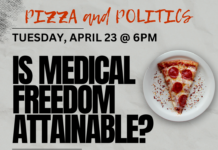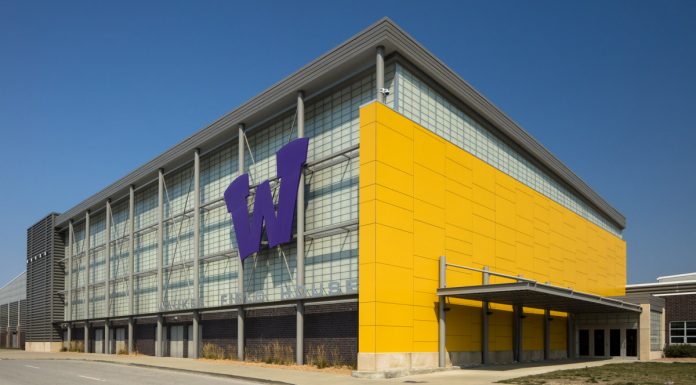TEF Iowa released the first cut of its economic impact of COVID-19 on the Iowa economy on Wednesday afternoon. TEF Iowa teamed up with Dr. Ernie Goss, MacAllister Chair in Regional Economics at Creighton, and Mr. Scott Strain, M.S., who is a senior economist with Goss & Associates.
While the United States is being confronted with the unprecedented crisis, TEF Iowa said the Hawkeye State was well-positioned entering the emergency.
“Iowa had $800 million in budget reserves and a surplus of $200 million,” said Walt Rogers, Deputy Director of TEF Iowa. “With economic uncertainty likely to linger, Iowa’s budget is positioned much better than some of our neighbors to dampen the financial impact of this pandemic.”
This first cut of the economic impact of COVID-19 on the Iowa economy focused on the infection rate, unemployment and tax revenues. The findings of the report are estimates based on available information and calculations performed by Goss & Associates.
Goss talked about what the recovery may look like. He said it will likely not be a V-shaped recovery with a sharp downturn and a sharp upturn. He speculated it likely won’t be a U-shaped recovery either.
“Now I’m in a swoosh like a Nike swoosh,” he said.
Goss expects a sharp downturn with a gradual upturn despite all the federal money being used to help states weather the storm.
The executive summary of the report states Iowa has its highest level of unemployment in April since the Great Depression. The number of Iowans receiving unemployment compensation rose to about 180,000 — or 10.5 percent of the state’s labor force. In April of 2019, that figure was 1.1 percent.
Typically, more than half of Iowans who are unemployed normally do not receive unemployment benefits. Based on the most recent 8.3 percent of insured unemployed, an overall unemployment rate for April is in a range between 13 percent and 16 percent. In April of 2019, that figure was 2.5 percent.
The job, wage and revenue loss from March 21-April 11 provide gloomy numbers as well.
The report says there was a loss of 243,237 direct and spillover jobs, a loss of $557.8 million in wages and salaries, a loss of $73.7 million in self-employment income and a total loss of $1.6 billion for the overall Iowa economy. There is also a reduction in future state and local tax collections of $112.1 million due to losses in sales taxes, individual income taxes, corporate income taxes, property taxes and other taxes and fees.
“Absent federal support via the CARES Act and Federal Reserve stimulus, COVID-19 is expected to reduce Iowa 2020 GDP by 9.7 percent,” the report states.
Goss told media he is concerned about rural hospitals.
“Rural hospitals are taking it on the chin right now,” he said. “They were already not where you want to be economically speaking.”
Recovery should not include plans to raise taxes.
“I’d like to say also there is the temptation to raise taxes or more see where you can raise taxes,” Goss said. “This is no time to be raising taxes. Unfortunately, property taxes in Iowa are already too high for the economic conditions.”
Concerns extend as well to the agriculture community. Goss said a survey conducted through bank CEOs in rural areas of Iowa and nine other states scored at a 12 on a scale of 0-100.
“It was a record low,” he said. “I hate to be doom and gloom here, but it’s not looking good here right now.”
The idea of bailing out states that had buried themselves with economic burdens isn’t something Goss supports either. States like California, Illinois, New York, Connecticut, Massachusetts and others have overspent for years.
Should some sort of bailout be put in place, it is important the money is tied directly to COVID-19 relief and not other levels of overspending.
In addition to not raising taxes, Goss and Strain said the government simply needs to get out of the way and decrease regulation.
“Let the private sector get back to work.”
All of that said, Goss said there is hope.
“We cannot be in a better part of the best nation on the face of the Earth,” he said.
There will be a huge demand for food and agriculture is very productive. He is hopeful that President Donald Trump resists trade barriers.
“No farmer on the face of the Earth can compete with the farmers in this part of the country,” he said. “I don’t want to get into the politics of China, but they really need our food and they will pay a premium and that’s good for us.”
As Americans begin to go to work, the economy will resume growing. It may take 12-24 months for supply chains to recover, but there is optimism.











